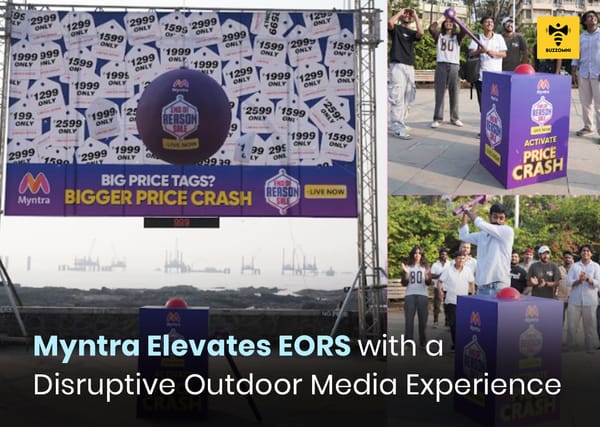September OOH Trends: How the Streets Evolved Beyond Visibility
September transformed India’s streets with hyperlocal, digital, and mobility-driven OOH campaigns. From interactive cabs to conversation-starting billboards, brands turned everyday commutes into engaging, memorable experiences.

Table of Contents
- Introduction
- Hyperlocal Targeting Soars
- Digital Integration Took Over
- Conversations Sparked by Campaigns
- Streets Came Alive with Mobility Media
- Final Word
Introduction
September wasn’t just another month for OOH advertising — it was a moment where India’s cityscapes turned into vibrant storytelling platforms. From bold outdoor ads on billboards to immersive experiences through transit advertising, brands leaned into new ways of connecting with audiences. Mobility media, in particular, evolved from carriers of ads into catalysts of engagement, showing how OOH outdoor advertising is moving well beyond visibility.
Here’s BuzzOmni’s deep dive into the trends that shaped September across outdoor advertising and cab branding.
Hyperlocal Targeting Soars
Precision dominated the OOH landscape in September. Instead of focusing solely on mass-reach outdoor ads, brands leaned into hyperlocal targeting — ensuring messages reached people in the right neighbourhoods, at the right time, during the right journeys.
Transit advertising took center stage here, with wrapped cabs, EVs, and shuttles acting as dynamic, data-led canvases. Campaigns were strategically mapped to office corridors, residential zones, and retail hotspots. This approach proved that when OOH ads are delivered with contextual intelligence, they move from being simply seen to being remembered.
Digital Integration Took Over
Another defining trend was the surge in digital integration within outdoor advertising. Static placements are no longer enough; brands are bringing tech-driven interactivity to the streets.
From QR codes on cab wraps that unlocked instant offers, to AR-led billboards that created memorable 3D experiences, campaigns bridged the gap between offline visibility and online engagement. For audiences, a daily commute became an opportunity to interact. For brands, these campaigns delivered measurable outcomes — scans, clicks, app downloads, and visits.
This seamless blend shows how OOH outdoor advertising is increasingly complementing television advertising and even cinema advertising, providing both mass reach and direct engagement.
Conversations Sparked by Campaigns
In September, the most successful campaigns weren’t just noticed — they were discussed. From bold creative storytelling on billboards to high-impact full-wrap cabs, ads turned into cultural talking points.
Social sharing played a big role here. Commuters snapped photos of eye-catching outdoor ads and posted them online, turning every placement into an amplifier. Interactive DOOH screens also contributed, with features like polls, countdowns, and contextual messages sparking curiosity and conversations.
This reflects a broader shift in OOH advertising: the medium isn’t passive anymore. When designed thoughtfully, OOH ads become conversation starters that extend far beyond the street corner or vehicle they appear on.
Streets Came Alive with Mobility Media
Mobility media proved its dominance once again. Branded cabs, EVs, and shuttles created high-frequency impressions by following consumers through their everyday journeys. Paired with traditional outdoor advertising like billboards or bus shelters, campaigns achieved layered visibility across touchpoints.
This synergy highlighted how transit advertising is becoming one of the most reliable formats for building brand recall. It ensures multiple consumer encounters with the same message — whether on a cab during the commute, a digital billboard near the office, or even a contextual ad before a movie in cinema advertising. The consistency across formats makes the brand unmissable.
Final Word
September showed us that OOH advertising is firmly in transition — from a medium of static visibility to one of active experience. Hyperlocal precision, digital integration, conversation-led campaigns, and mobility-first strategies all proved that outdoor advertising is more relevant than ever.
For brands, this evolution underscores the importance of integrated planning: using television advertising for reach, cinema advertising for impact, and OOH outdoor advertising — especially transit advertising — for everyday presence and engagement.
At BuzzOmni, we see this shift as the foundation for the future of the industry. The brands that harness creativity, data, and context within their OOH ads won’t just occupy space — they’ll own conversations, build trust, and create unforgettable experiences.



